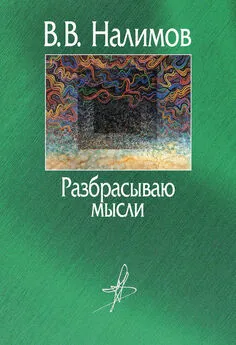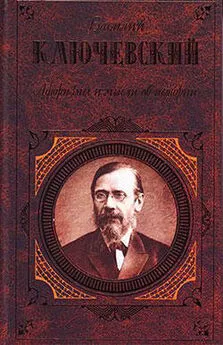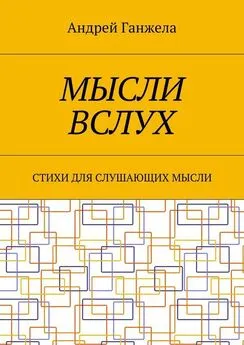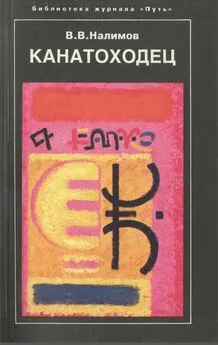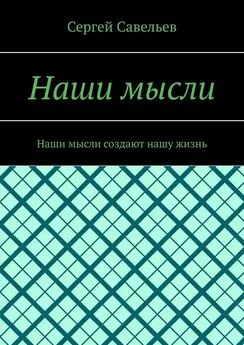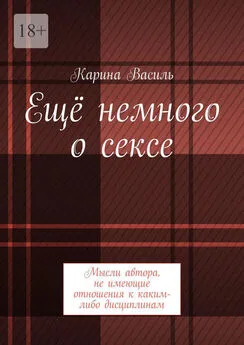Василий Налимов - Разбрасываю мысли
- Название:Разбрасываю мысли
- Автор:
- Жанр:
- Издательство:Литагент «ЦГИ»2598f116-7d73-11e5-a499-0025905a088e
- Год:2015
- Город:Москва
- ISBN:978-5-98712-521-2
- Рейтинг:
- Избранное:Добавить в избранное
-
Отзывы:
-
Ваша оценка:
Василий Налимов - Разбрасываю мысли краткое содержание
Автор приглашает читателя к размышлениям на философские темы, касающиеся сущности мира и человека, к творческому поиску в пространстве смыслов, устремленных к потенциальному богатству Будущего. Основные темы книги: смысловая природа личности, вероятностная модель сознания, биологический эволюционизм как творческий процесс, мир как геометрия и мера, философское запредельное – проблема личностной теологии.
Методологическое умение автора позволяет ему соединять области рационального и нерационального, открывая новые перспективы и методы постановки вопросов. Он ведет читателя по разным уровням и лабиринтам реальности, непрерывно расширяя «географию» этого интеллектуального путешествия, направленного на то, чтобы «постичь Вселенной внутреннюю связь».
Разбрасываю мысли - читать онлайн бесплатно ознакомительный отрывок
Интервал:
Закладка:
Luneburg R.K. 1948. Metric methods in binocular visual perception. In: Studies and essays. N.Y.: Interscience Publishers. Courant anniversary vol., p. 215–239.
Luneburg R.K. 1950. The metric of binocular visual space. J. Opt. Soc. Amer., 40, 10, p. 627–642.
MacIntosh R.P. 1980. The background and some current problems of theoretical biology. Synthese, 43, 2, p. 195–255.
Madhu Khanna. 1979. Yantra. The Tantric Symbol of Cosmic Unity. London: Thames and Hudson, 176 p.
Mayer E. 1982. The Growth of Biological Thought. Diversity, Evolution, and Inheritance. Cambridge: The Balknap Press of Harvard Univ. Press, 974 p.
McCrea W.H., Rees M.J. (eds.). 1983. The Constants of Physics. Collection of articles. Philosophical Transactions of the Royal Society of London, vol. 310, No. 1512, p. 209–363.
Mendelson E. 1980. The continuous and the discrete in the history of science. In: Brim O.G. Jr., Kagan J. (eds.). Constancy and Change in Human Development. Cambridge: Cambridge Univ. Press, p. 75—112.
Metzger B.M. (ed.). 1957. An Introduction to the Apocrypha. N.Y.: Oxford Univ. Press, 274 p.
Micklem H.S. 1977. Immunology. In: The Encyclopedia of Ignorance. Everything you ever wanted known about the unknown. Oxford: Pergamon Press, pp. 305–310.
Misner Ch.W., Wheeler J.A. 1957. Classical physics as geometry: gravitation, electromagnetism, unquantized charge, and mass as properties of curved empty space. Ann. Phys., 2, p. 525–603.
Monod J. 1972. Chance and Necessity. N.Y.: Vintage Books, 199 p. ( Le Hasard et la Necessité. Essai sur la philosophie naturelle de la biologie moderne. Paris: 1970, 212 p.)
Montagu A. 1981. Growing Young. Hightstown, N.J.: McGraw-Hill, 306 p.
Morowitz H.J. 1967. Biological self-replicating systems. In: Snell F.M. (ed.). Progress in Theoretical Biology, vol. 1. N.Y.: Academic Press, p. 35–58.
Mourant A.E. 1977. Why are there blood groups. In: The Encyclopedia of Ignorance. Everything you ever wanted known about the unknown. Oxford: Pergamon Press, p. 311–316.
Murphy M., Donovan S. 1983. A bibliography of meditation theory and research. The J. of Transpersonal Psychology, 15, 2, p. 181–227.
Nagel E. 1961. The Structure of Science. Problems of Logic of Scientific Explanation. London: Routledge & Kegan Paul, 618 p.
Nalimov V.V, 198l a. In the Labyrinths of Language. A Mathematician’s Journey. Philadelphia: ISI Press, 246 p.
Nalimov V.V. 1981 b. Faces of Science. Philadelphia: ISI Press, 297 p.
Nalimov V.V. 1982. Realms of the Unconscious. The Enchanted Frontier. Philadelphia: ISI Press, 320 p.
Nieto M.M. 1972. The Titius-Bode Law of Planetary Distances. Its History and Theory. Oxford: Pergamon Press, 161 p.
Pap A. 1951. The Concept of Absolute Emergence. The British J. for the Philosophy of Science, 2, 8, p. 302–311.
Papert S. A. 1979. The Mathematical Unconscious. In: Wechsler J. (ed.). On Aesthetics in Science.Cambridge: The MIT Press, p. 105–119.
Peters R.H. 1983. The Ecological Implications of Body Size. Cambridge: Cambridge Univ. Press, 329 p.
Plotinus. 1956. The Enneads(transl. S. MacKenna). London: Farber & Farber, 635 p.
Popper K.R., Eccles J.C. 1977. The Self and its Brain. Berlin: Springer Verlag, 597 p.
Prigogine I. 1976. Order through fluctuation. Self-organisation and social system. In: Jantsch E., Waddington C.H. (eds.). Evolution and Consciousness. Human System in Transition. Reading, Mass.: Addison-Wesley, p. 93—126.
Rashevsky N. 1954. Topology and life. Search of general mathematical principles in biology and sociology. Bulletin of Mathematical Biophysics, 16, 4, p. 317–348.
Rashevsky N. 1956. The geometrization in biology. Bulletin of Mathematical Biophysics, 18, 1, p. 31–56.
Rashevsky N. 1958. A note on biotopology of reproduction. Ibid., 20, 3, p. 275–279.
Rashevsky N. 1967. Physics, biology and sociology: II. Suggestion for a synthesis. Ibid., 29, 3, p. 643–648.
Reznikoff H.L. 1974. Differential geometry and color perception. J. Math. Biol. 1, 2, p. 97—131.
Ricoeur P. 1974. The Conflict of Interpretations. Essays in Hermeneutics. Evanston: Northwestern Univ. Press, 512 p.
Rigler F. H. 1982. Recognition of the possible. An advantage of empiricism in ecology. Canadian J. of Fisheries and Aquatic Sciences, 39, 9, p. 1323–1331.
Rosen R. 1958 a. A relational theory of biological systems. Bulletin of Mathematical Biophysics, 20, 3, p. 245–260.
Rosen R. 1958 b. Representation of biological systems from the standpoint of the theory of categories. Ibid., 20, 4, p. 317–342.
Roskies R., Peres A. 1971. A New Pastime – Calculating Alpha to One Part in a Million (letter). Physics Today,24, II, 9 p.
Schrödinger E. 1920. Grundlinien einer Theorie der Farbenmetrik im Tagsehen. Annalen der Physik, 63, 22, S. 481–520.
Sheldrake R. 1981. A New Science of Life. The Hypothesis of Formative Causation. London: Blond & Briggs, 229 p.
Shelling H. von. 1955. Advanced color geometry. J. Opt. Soc. Amer., 45, 12, p. 1072–1079.
Shelling H. von. 1956 a. Concept of distance in affine geometry and its application in theories of vision. J. Opt. Soc. Amer., 46,4, p. 309–315.
Shelling H. von. 1956 b. Reply to P.J. van Heerden. J. Opt. Soc. Amer., 46, 11, p. 1000–1001.
Shelling H. von. 1960. Die Geometrie des beideaugigen Sehens. Optik, Bd. l7, No. 7, S. 345–364.
Shelling H. von. 1964. Experienced space and time. In: Bioastronautics. N.Y., p. 361–385.
Simberloff D. 1980. A succession of paradigms in ecology. Essentialism to materialism and probabilism. Synthese, 43, 1, p. 3—39.
Simpson G. 1973. The divine non-sequitur. In: Theilhard de Chardin. In Quest of the Perfect Man. Fairleigh, p. 88—102.
Stapp H.P. 1982. Mind, matter and quantum mechanics. Foundations of Physics, 12, 4, p. 363–398.
Taylor A.M. 1976. Process and structure in sociocultural systems. In: Jantsch E., Waddington C.H. (eds). Evolution and Consciousness. Human System in Transition. Reading, Mass.: Addison-Wesley, p. 169–184.
Theodorsson Sven-Tage. 1982. Anaxagoras’ Theory of Matter. Göteborg, Sweden: Acta Universitatis Gothoburgensis, 108 p.
Thom R. 1975. Structural Stability and Morphogenesis. An Outline of a General Theory of Model (foreword Waddington C.H.). Reading, Mass.: Benjamin Inc., 348 p.
Thompson D’A.W. 1942. On Growth and Form. London: Cambridge Univ. Press, 1116 p.
Thomsen D.E. 1984. Kaluzo-Klein: The Koenigsberg Connection. Science News, 126 (July 7), p. 12–14.
Thuillier P. 1980. La Physique et l’Irrational. Recherche, 11, 111, p. 582–587.
Todd J.T., Mark L.S., Show R.E., Pittenger J.B. 1980. The perception of human growth. Scientific American, 242, 2, p. 132–144.
Tomlin E.W.F. 1977. Fallacies of evolutionary theory. In: The Encyclopedia of Ignorance. Everything you ever wanted known about the unknown. Oxford: Pergamon Press, p. 227–264.
Toulmin S. 1972. Human Understanding. Oxford: Clarendon Press, vol. 1, XII, 520 p.
Vertosik F.T, Jr. 1978. Remarks on stratifying interactions in five dimensions. Foundations of Physics, 8, 1/2, p. 93—102.
Waddington C.H. 1976 a. Concluding remarks. In: Jantsch E., Waddington C.H. (eds). Evolution and Consciousness. Human Systems in Transition. Reading, Mass.: Addison-Wesley, p. 243–249.
Waddington C.H. 1976 b. Evolution in the sub-human world. In: Ibid., p. 11–15.
Watts A.W. 1975. The Way of Zen. Harmondsworth, England: Penguin Books, 252 p.
Wheeler J.A. 1981. Not consciousness but the distinction between the probe and the probed as central to the elemental quantum act of observation. In: Jahn R.G. (ed.). The Role of Consciousness in the Physical World(AAAS Selected Symposium 57). Boulder, Colo.: Westview Press, p. 87—111.
Whittaker R.H. 1967. Gradient analysis of vegetation. Biological Reviews, 42, 2, p. 207–264. Wilson Thw.J. 1981. Sein als Text: Vom Textmodel als Martin Heideggers Denkmodel. Eine funktionalische Interpretation. Freiberg: Alber, 320 S.
Winfree A.T. 1980. The Geometry of Biological Time. Berlin: Springer Verlag, 530 p.
Zadeh L.A. 1965. Fuzzy Sets. Information and Control, vol. 8, p. 338–353.
Zadeh L.A. 1978. Fuzzy Sets as a basic for theory of possibility. In: Fuzzy Sets and Systems, № 1, p. 3—28.
Zeeman E.C. 1965. Topology of the brain. In: Mathematics and Computer Science in Biology and Medicine. Medical Research Council. London: Her Majesty’s Stationery Office, p. 240–256.
Глава 7
Философия числа [142]
Как возможна метрическая герменевтика?
С Числом все равно что с Благом.
Plotinus [1956, р. 549]Возникновение наукометрии снова заставило задуматься о роли Числа в нашем мышлении. Долгое время устремленность к позитивному знанию исключала возможность развития философии Числа. Казалось, что Число – понятие простое и не о чем тут думать. Размышления древних о Числе нередко оценивали презрительно, называя их построения «мистикой чисел». В наши дни ситуация меняется: кажется, мы приближаемся к философскому осмыслению роли Числа в мироздании. Наукометрия убедительно показала, как Числом можно мерить и научную деятельность – «святыню» нашей культуры. Серьезный вклад здесь внесли два журнала – Current Contents и Scientometrics.
Начнем наш анализ с краткого описания позиций древних мыслителей.
Еще Платон (или, может быть, один из его учеников) говорил [1972]:
977d… необходимо класть в основу всего число (с. 486).
У гностиков в Евангелии от Филиппа читаем [Robinson, 1978]:
62.15. «Христос» – тот, кто измерен (с. 137).
Читать дальшеИнтервал:
Закладка:
